Fujifilm FinePix Z700 EXR Review
Fujifilm FinePix Z700 EXR
Fuji's new luxury compact is a high-tech marvel at a bargain price
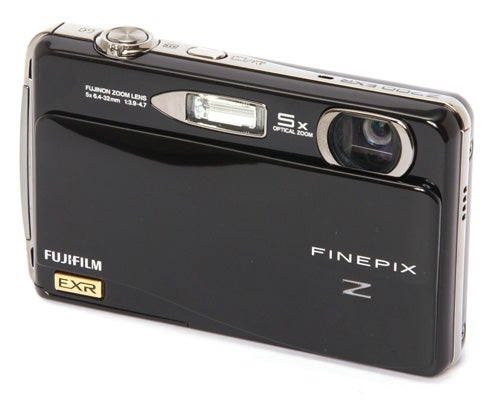
Verdict
Pros
- Ultra-slim body
- Excellent value
- High-quality sensor
Cons
- No optical zoom with video
- Slow start-up
- Mediocre battery life
Key Specifications
- Review Price: £159.00
- 12-megapixel sensor
- 5x optical zoom
- 720p video recording at 24fps
- 3.5-inch LCD touchscreen display
- Super CCD EXR sensor
The FinePix Z700 EXR is the latest of Fujifilm’s compact camera range to utilise the company’s advanced Super CCD EXR sensor, a technology first introduced last year with the launch of the excellent FinePix F200 EXR compact. This unique sensor design has three different modes of operation offering the choice between the full resolution of a 12-megapixel sensor, superior dynamic range or improved high-ISO noise control.
The results from the F200 were impressive, and the same sensor technology has since appeared in several more of Fui’s high-end models, including the brilliant S200 EXR super-zoom, and the F70 EXR and F80 EXR advanced compacts. The Z700 EXR marks the first time the EXR sensor has been used in one of Fuji’s slim compact range of point-and-shoot fashion cameras, and it is combined with other advanced technology to produce what is undoubtedly one of the smartest ultra-compact cameras on the market. 
The Z700 is a slim and attractive ultra-compact designed to appeal to the style-conscious buyer who is looking for a versatile but easy-to-use camera. It measures 98.1 x 59 x 20.3mm and weighs 158g fully loaded, possibly a bit on the heavy side but certainly slim enough to fit in a shirt pocket. It has a slide-down front panel concealing a 5x zoom lens equivalent to 35-175mm, while on the back it has a huge 3.5-inch touch-screen monitor with a resolution of an impressive 460,000 dots, double the resolution of most compact camera screens.
It is available in a range of four colours; silver, red, the inevitable pink and the shiny gloss black shown here. The build quality is excellent, and despite the camera’s slim profile it is pleasant and comfortable to handle, although the skinny frame of the monitor and the slippery surface of the gloss finish make it hard to grip securely with sweaty fingers.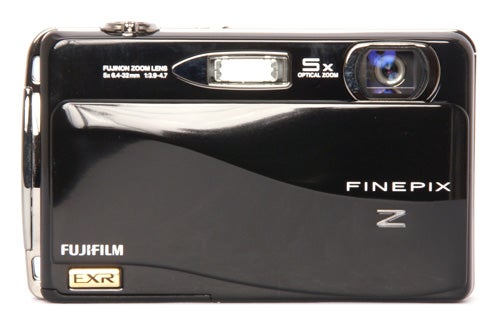
As well as the 12-megapixel EXR sensor, the 5x zoom lens and the huge high-res touch screen monitor, the Z700 also features sensor-shift image stabilisation and HD video recording, which is a pretty decent specification by any standard, however the most impressive thing about the Z700 is its price. It has the style, build quality and features of an advanced luxury compact, and from any other manufacturer one might expect to pay close to £300 for this level of style and sophistication, but Fujifilm is managing to knock these things out at £160, which is practically budget-camera level.
The Z700’s touch-screen interface is well thought-out, with large easy-to-use button areas and smooth and responsive performance. When shooting the buttons controlling the main functions are lined up down either side of the screen, while in menu mode options are selected via a panel of large well-labelled buttons that cover most of the screen. Like most touch-screens, the touch sensitive layer is quite reflective in strong sunlight, but it’s not as bad as some that I’ve seen, and the screen is generally bright enough to overcome this problem. The camera has a tilt sensor, and in playback mode with the camera held vertically this is used to activate a very nice thumbnail browser interface.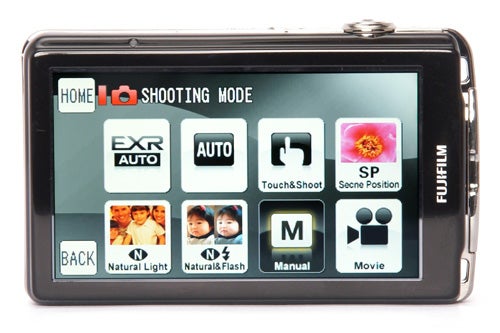
The Z700 is a point-and-shoot camera, so its creative options are a bit limited. It has eight main shooting modes, the default option being the EXR Auto mode. The results in this mode are usually so good that there won’t be much need to explore the others, but it also has a standard program auto mode, a Touch-and-Shoot mode in which the focus point is selected and the shutter fired by touching the screen.
It has a Scene Mode option with 15 fairly typical scene programs, Natural Light and Natural Light with Flash modes, the video recording mode and a “Manual” mode, which is really just an auto mode but with more menu options, such as autofocus settings, white balance, image size and quality and face detection. The only colour control is the film simulation mode, which mimics the colour balance of Fuji Provia or Velvia colour films, plus monochrome and sepia.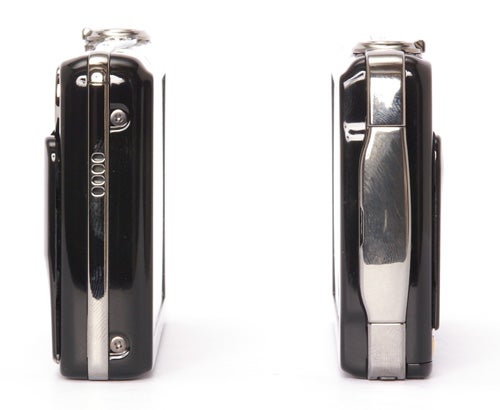
The video recording mode is pretty average for a modern pocket compact. It shoots in 1280 x 720 resolution at 24fps (arguably more sensible than 30fps), with mono audio captured by an internal microphone. Video is recorded in Motion JPEG format, and to be honest the quality isn’t brilliant. There is no optical zoom available while recording, and the audio quality is pretty poor, with lots of hiss and background noise. Recording time is good though, limited only by card capacity, with a 1GB card providing 5 mins 14 secs of video footage.
The Z700’s overall performance has good points and bad. It is very slow to start up, taking around five seconds from opening the front panel to taking the first picture. However single shot mode the shot-to-shot time is approximately 1.6 seconds, which is very quick. In continuous shooting mode it can manage just under two shots a second, but only for five shots, after which it has to pause for nearly eight seconds while it writes the results to the memory card. At least there is an audio cue to tell you when a shot is taken, and the monitor remains live throughout.
The autofocus system is very fast and accurate in good light, and the automatic selection of the appropriate EXR mode is virtually instant, so there is minimal shutter delay. However the low-light focusing is less impressive, failing to focus in dim evening lighting. The Z700 has no AF assist lamp so it’s virtually useless in lower light levels, which is an odd omission for a camera designed for social snapshot photography and which lists the low-light shooting ability of the EXR sensor as a major selling point.
One significant concern is battery duration. The Z700 is powered by a relatively puny 720mAh li-ion rechargeable, and even Fuji’s own documentation only claims 170 shots on a full charge. I found that with a brand new battery I only got about 150 shots, but li-ion batteries do improve slightly after a few charge cycles. When most of its competitors can comfortably take 250 shots on a charge this is a bit of a weak point for the Z700.
Fortunately the Z700 does have one major strong point, and that is its image quality. As in its previous appearances the EXR sensor technology proves its worth, with dynamic range far surpassing any of its competitors, and better than average high-ISO noise control. Shots at 400 ISO are of very good quality, and are printable at 800 and even 1600 ISO. The 6MP-only 3200 ISO setting is a bit ropey, but then the same is true of most other cameras in this class.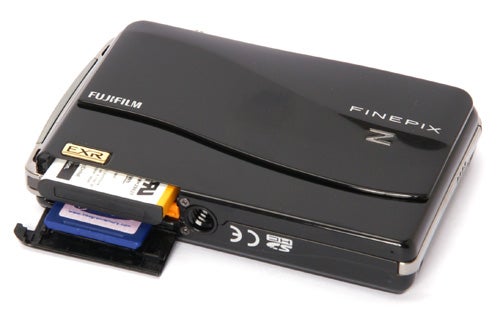
Lens quality has never been one of Fuji’s strong points, and the Z700 does suffer from some chromatic aberration and slight blurring towards the corners of the frame, but centre sharpness is good and there is minimal barrel distortion at the wide end of the zoom.
”’Verdict”’
The FinePix Z700 EXR combines Fuji’s technically advanced sensor technology with a stylish design, a well-implemented touch-screen interface, decent performance, a good range of features and superior build quality to produce a great pocket compact that is fun to use and produces excellent results, although the poor low-light focusing is a disadvantage. The surprisingly low price makes it excellent value for money.
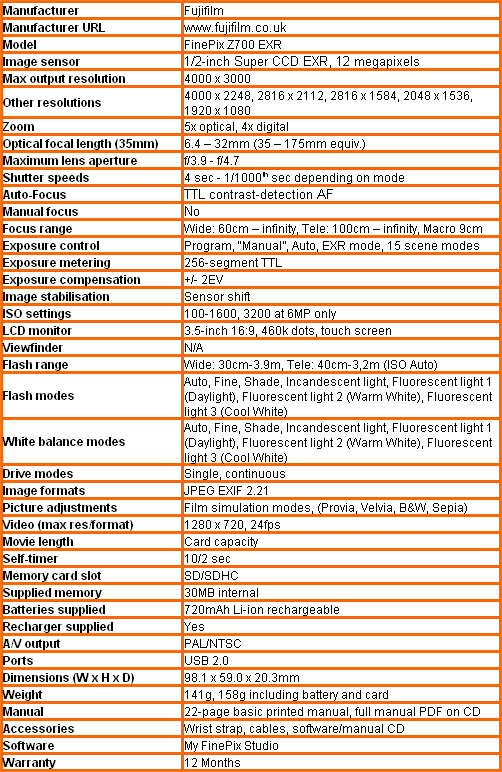
”Over the next few pages we show a range of test shots. On this page the full size image at the minimum and maximum ISO settings have been reduced to let you see the full image, and a series of full resolution crops have taken from original images at a range of ISO settings to show the overall image quality. These pictures were taken indoors using shaded natural light. ”
—-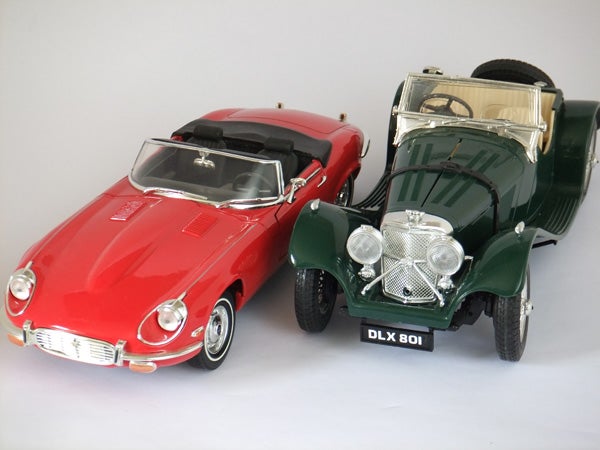
This is the full frame at 100 ISO.
—-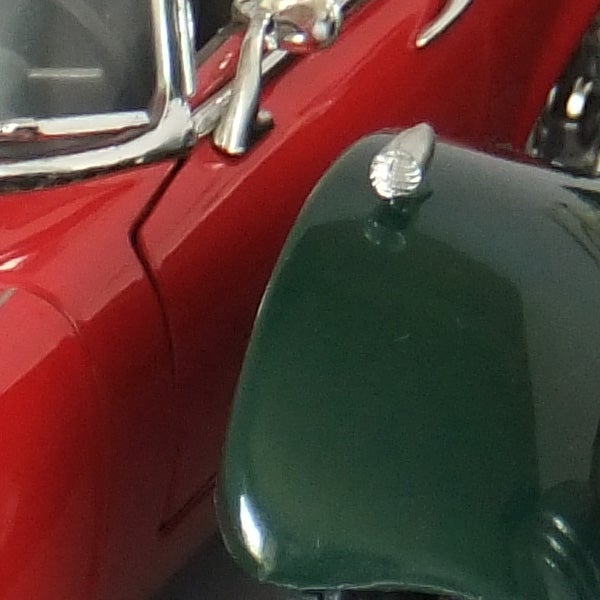
At 100 ISO the image quality is excellent.
—-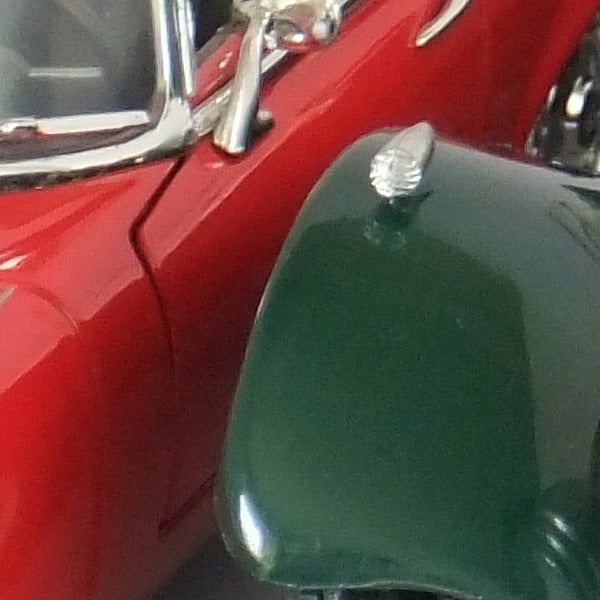
Similar results at 200 ISO.
—-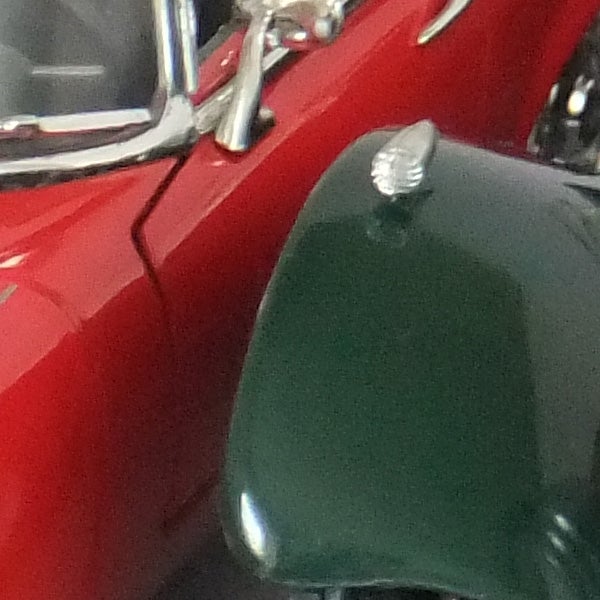
Good noise control at 400 ISO
—-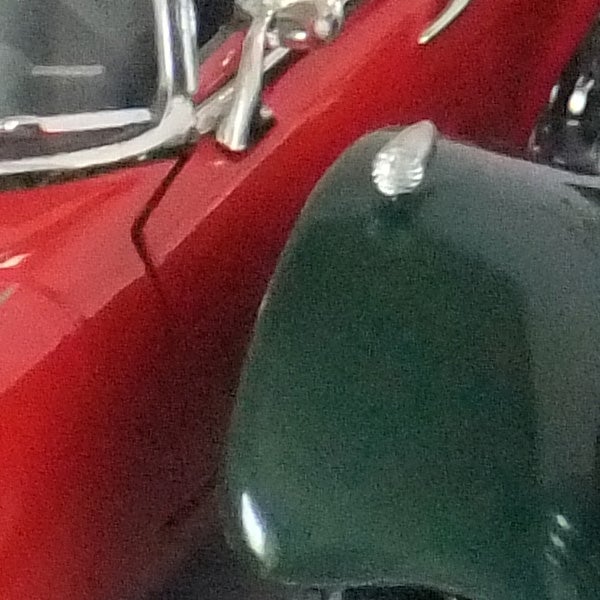
Some grain-like noise at 800 ISO, but colour gradation is still good.
—-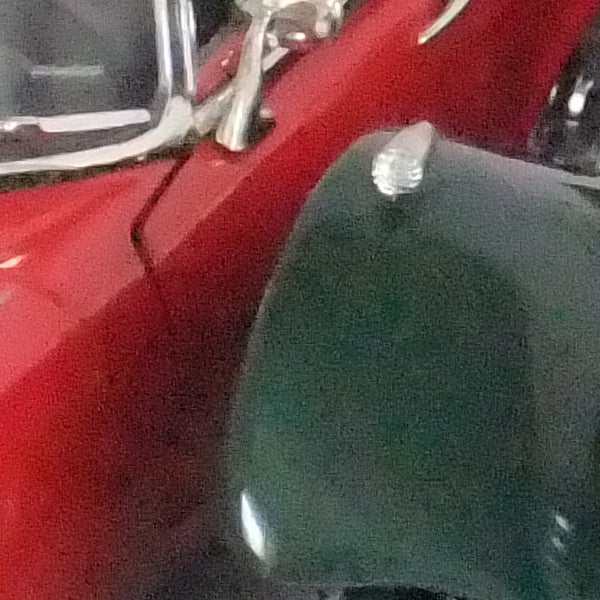
1600 ISO is quite noisy, but the results would still print well.
—-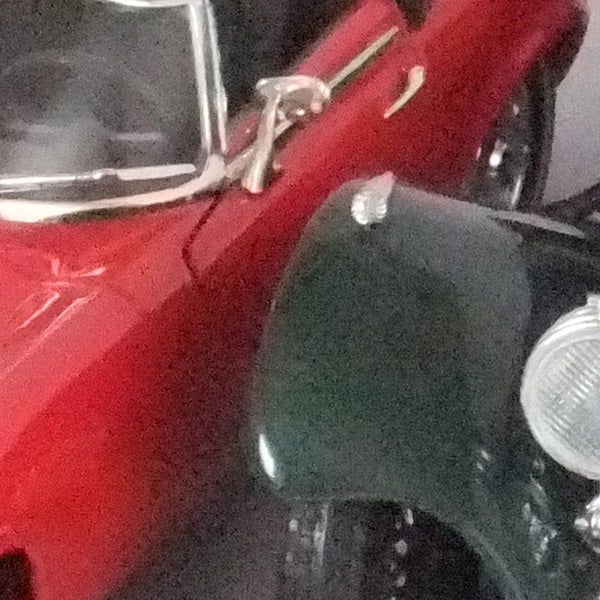
3200 ISO is available at 6MP resolution.
—-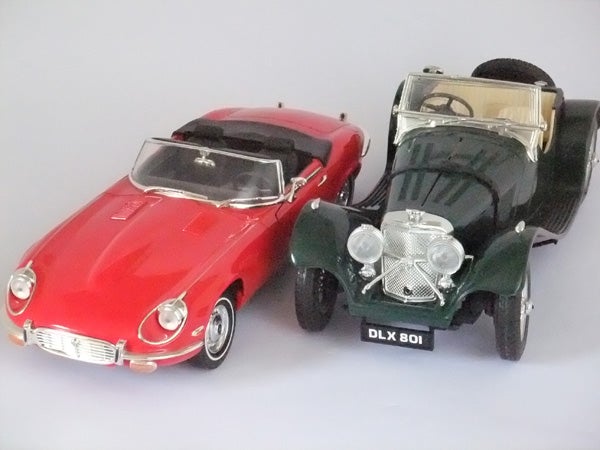
This is the full frame at 3200 ISO.
—-
”A range of general test shots are shown over the next two pages. In some cases, the full size image has been reduced for bandwidth purposes, and a crop taken from the original full resolution image has been placed below it to show the overall image quality. Some other pictures may be clicked to view the original full-size image. ”
—-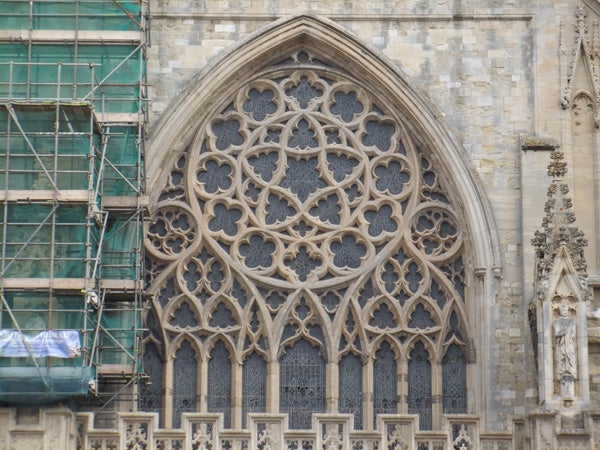
Here’s the usual detail test shot of the West Window of Exeter Cathedral, for you to compare with other cameras. See below for a full res crop, or click to see the whole picture. File size 4.3MB.
—-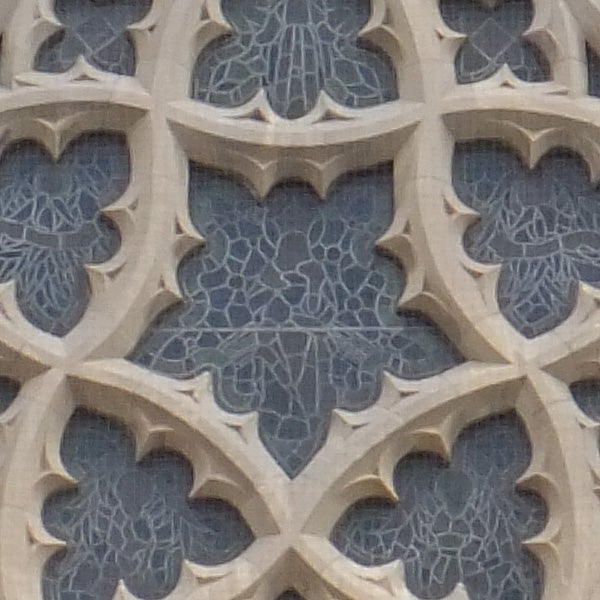
The level of fine detail is quite good, but I’ve seen better from 12MP compacts.
—-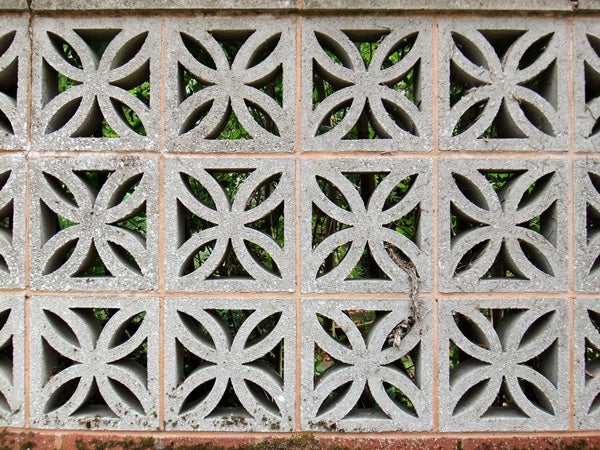
There is virtually no barrel distortion, but that may be corrected digitally.
—-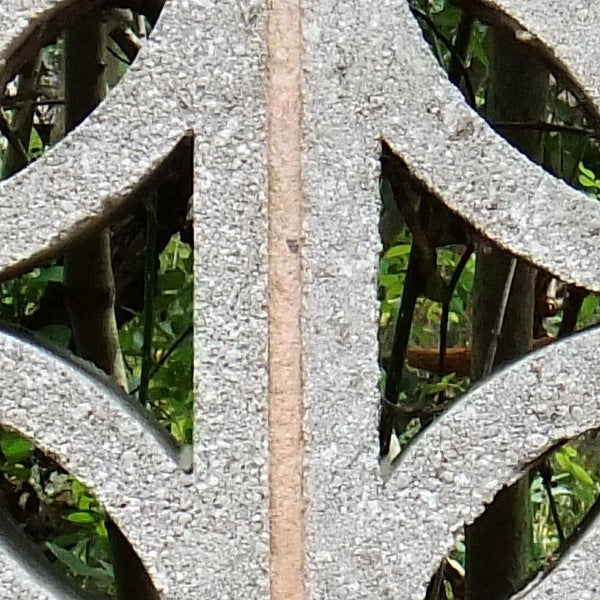
Centre sharpness is good, although not brilliant.
—-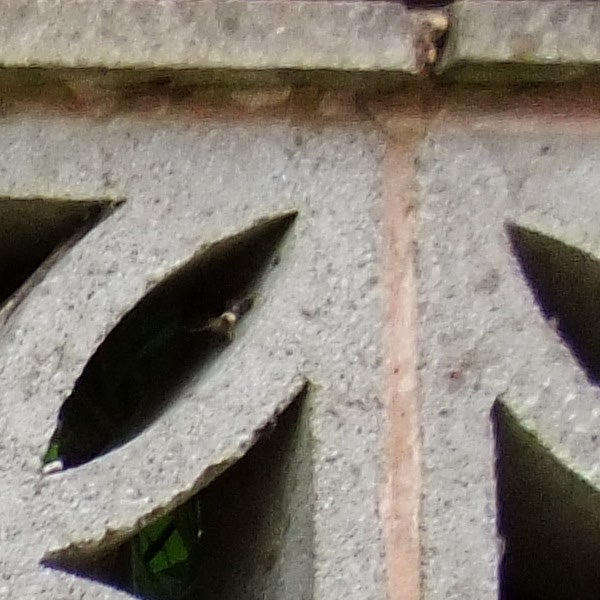
Corner sharpness could be better, and there is a little chromatic aberration.
—-
”Here are some general test shots to help evaluate the camera’s overall image quality, including dynamic range, colour rendition and the zoom range of the lens. Some pictures may be clicked to download the full size original image. ”
—-
The wide angle end is equivalent to 35mm.
—-
The telephoto end is equivalent to 175mm.
—-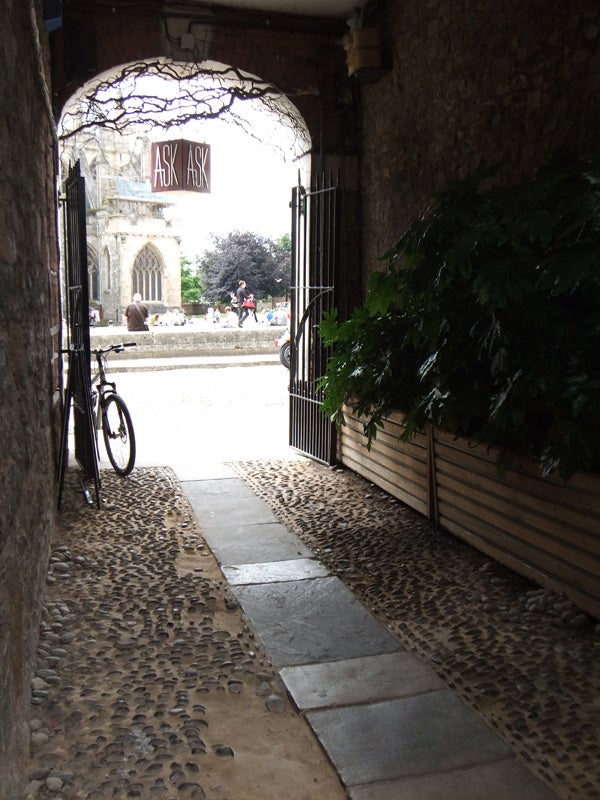
In standard auto mode the dynamic range is pretty good, with decent shadow detail.
—-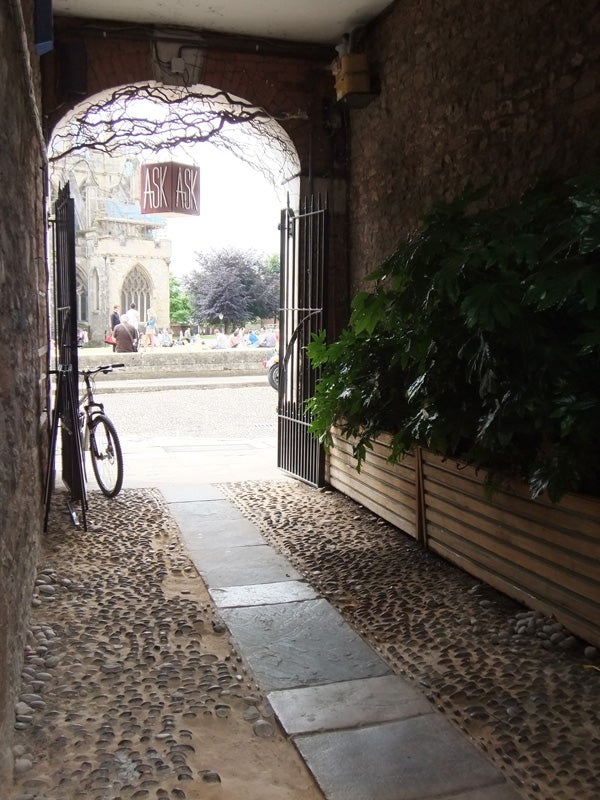
In EXR DR mode dynamic range is excellent, especially for a 12MP sensor.
—-
Colour rendition in the standard Provia film mode is very natural.
—-
Trusted Score
Score in detail
-
Value 10
-
Image Quality 8
-
Build Quality 9
Features
| Camera type | Digital Compact |
| Megapixels (Megapixel) | 12 Megapixel |
| Optical Zoom (Times) | 5x |
| Image Sensor | 1/2-inch Super CCD |
| Optical focal length | 6.4mm to 32mm |
| Shutter speed | 4 seconds to 1/1000th sec |
| Auto focus | TTL Contrast detection AF |
| Manual focus | No |
| Max output resolution | 4000x3000 |
| Other resolutions | 4000x2248, 2816x2112, 2816x1584, 2048x1536, 1920x1080 |
| Focus range | Wide: 60cm to infinity, Tele: 100cm to infinity, Macro 9cm |
| Exposure control | rogram "Manual", Auto, EXR Auto, 15 scene modes |
| Exposure metering | 256-segment TTL |
| Exposure compensation | +/- 2EV |
| Image Stabilisation | Sensor Shift |
| ISO settings | 100-1600, 3200 at 6MP |
| LCD Monitor | 3.5-inch 16:9 460k dots |
| Viewfinder | N/A |
| Flash range | Wide: 30cm to 3.9m Tele: 40cm to 3.3m (AUTO ISO) |
| Flash modes | Auto Flash, Flash OFF, Flash ON, Red-eye Reduction |
| White balance modes | Auto, Fine, Shade, Incandescent light, fluorescent 1,2 3) |
| Drive modes | Single, continuous |
| Image formats | JPEG, Exif 2.21 |
| Picture adjustments | Film simulation modes (Provia, Velvia, Black&White, Sepia) |
| Video (max res/format) | 1280x720 at 24fps |
| Movie length | Card capacity |
| Self timer | 10/2 secs |
| Memory card slot | SD/SDHC |
| Supplied memory | 30MB internal |
| Batteries supplied | 720mAh Li-ion rechargeable |
| Charger supplied | Yes |
| A/V output | PAL/NTSC |
| Charging/Computer Connection | USB 2.0 |
| Manual | 22-pages basic printed guide, full manual PDF on CD |
Physical Specifications
| Dimensions Width (Millimeter) | 98.1mm |
| Depth (Millimeter) | 59mm |
| Weight (body only) (Kilogram) | 141gkg |

